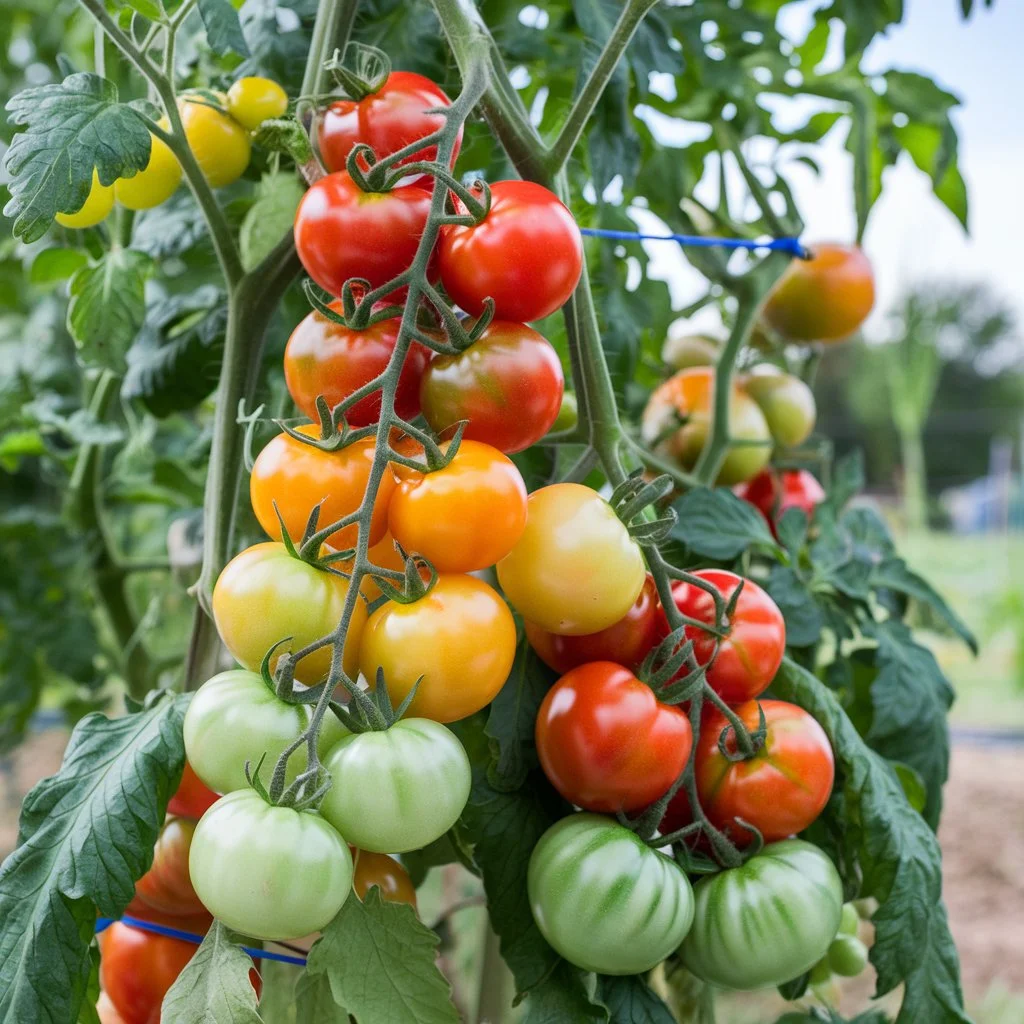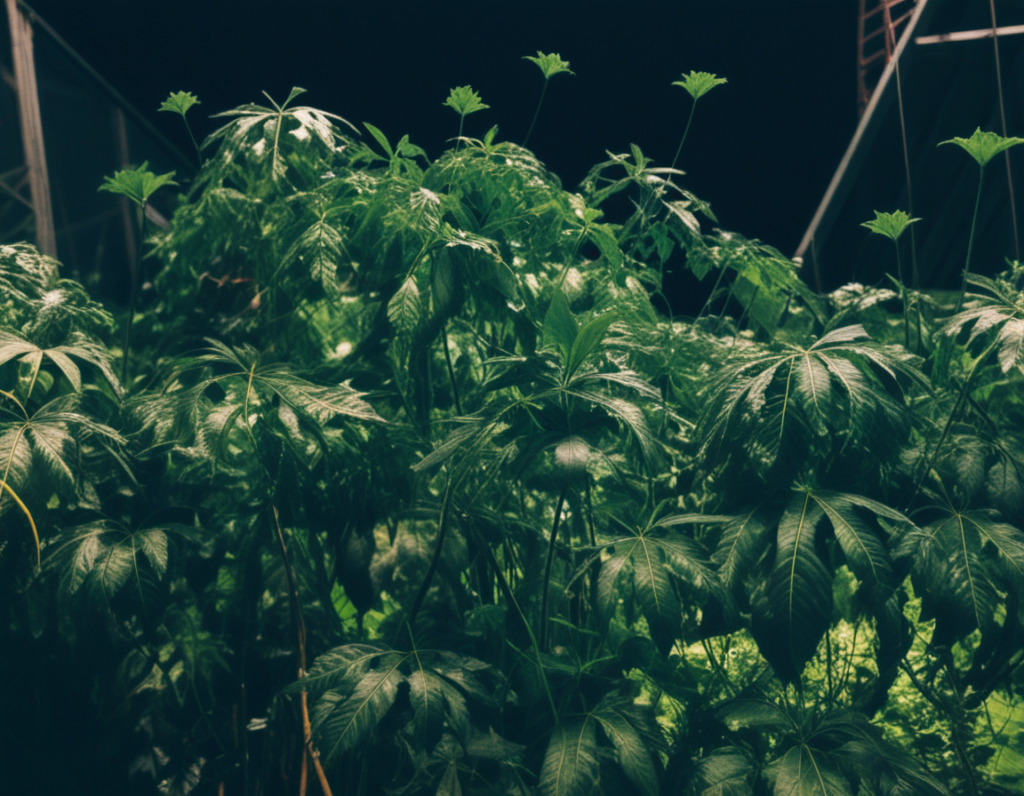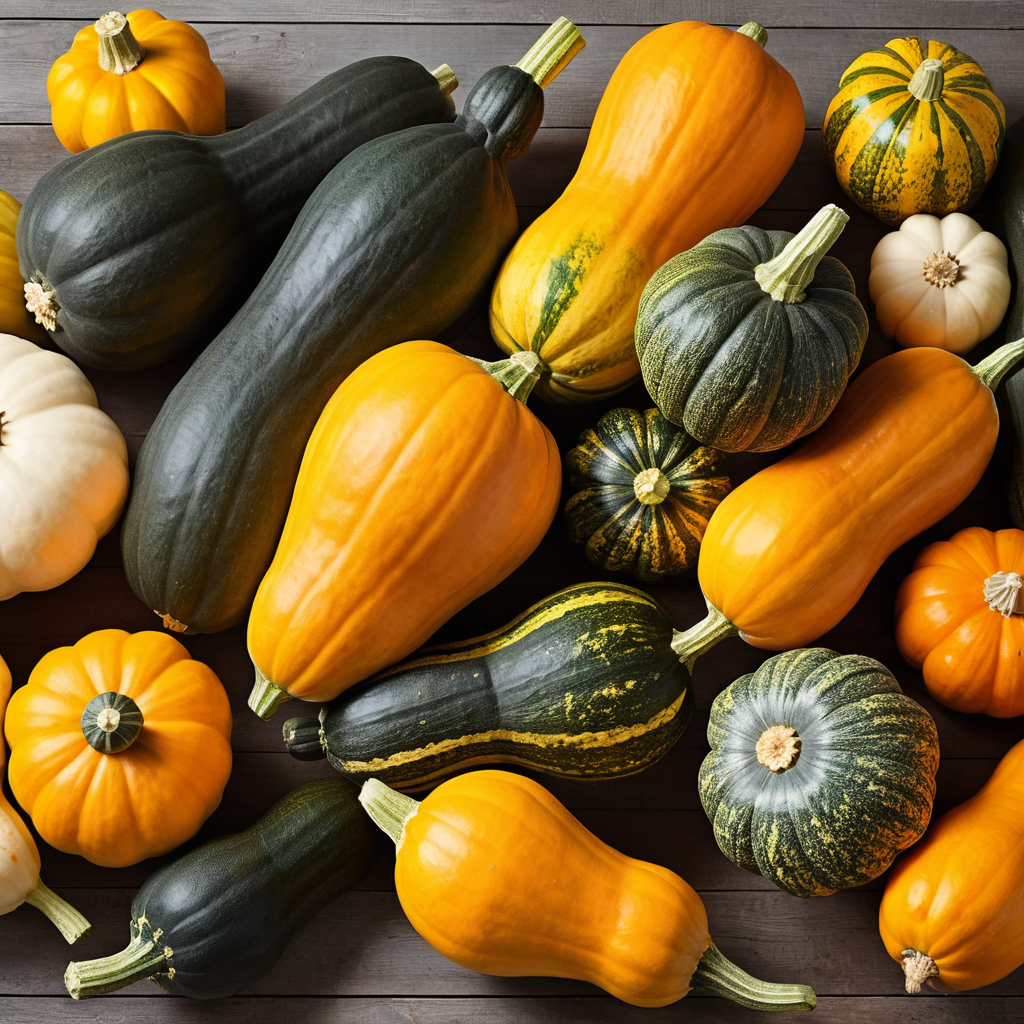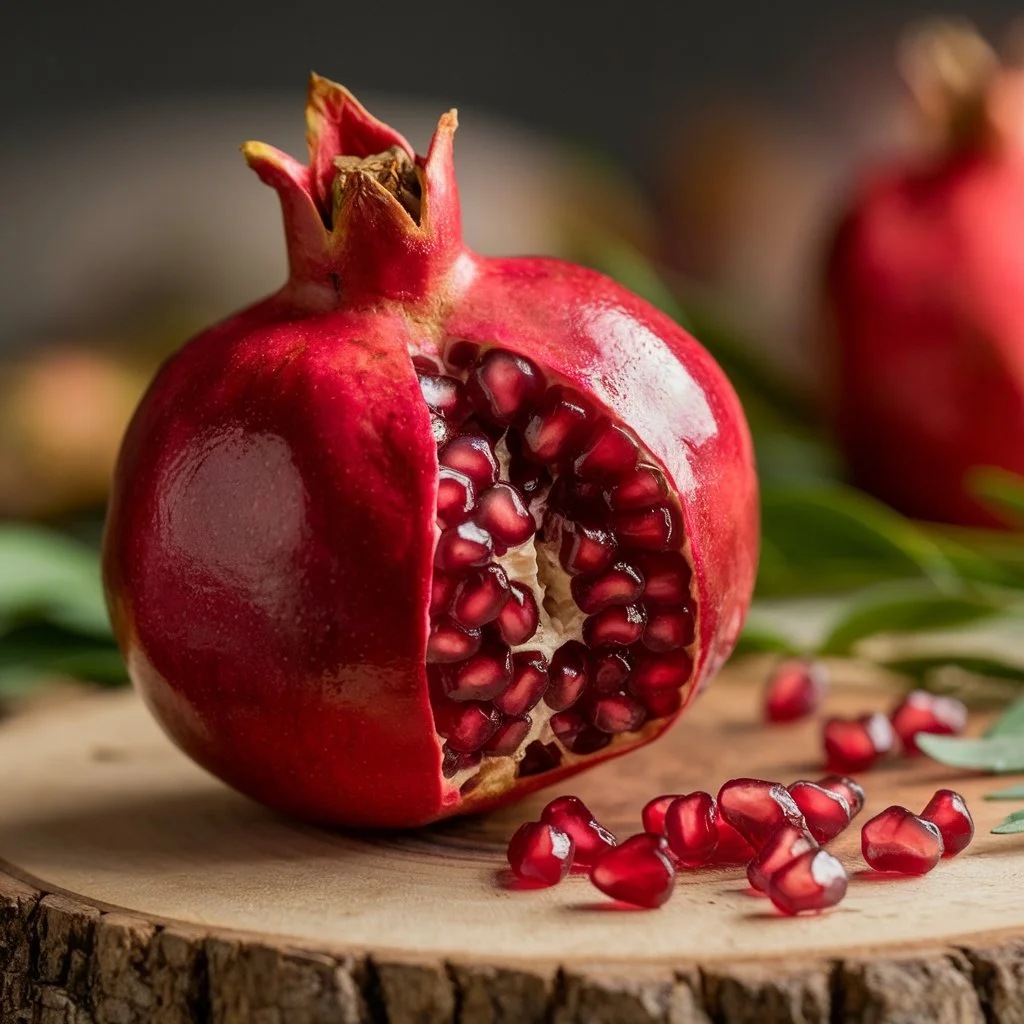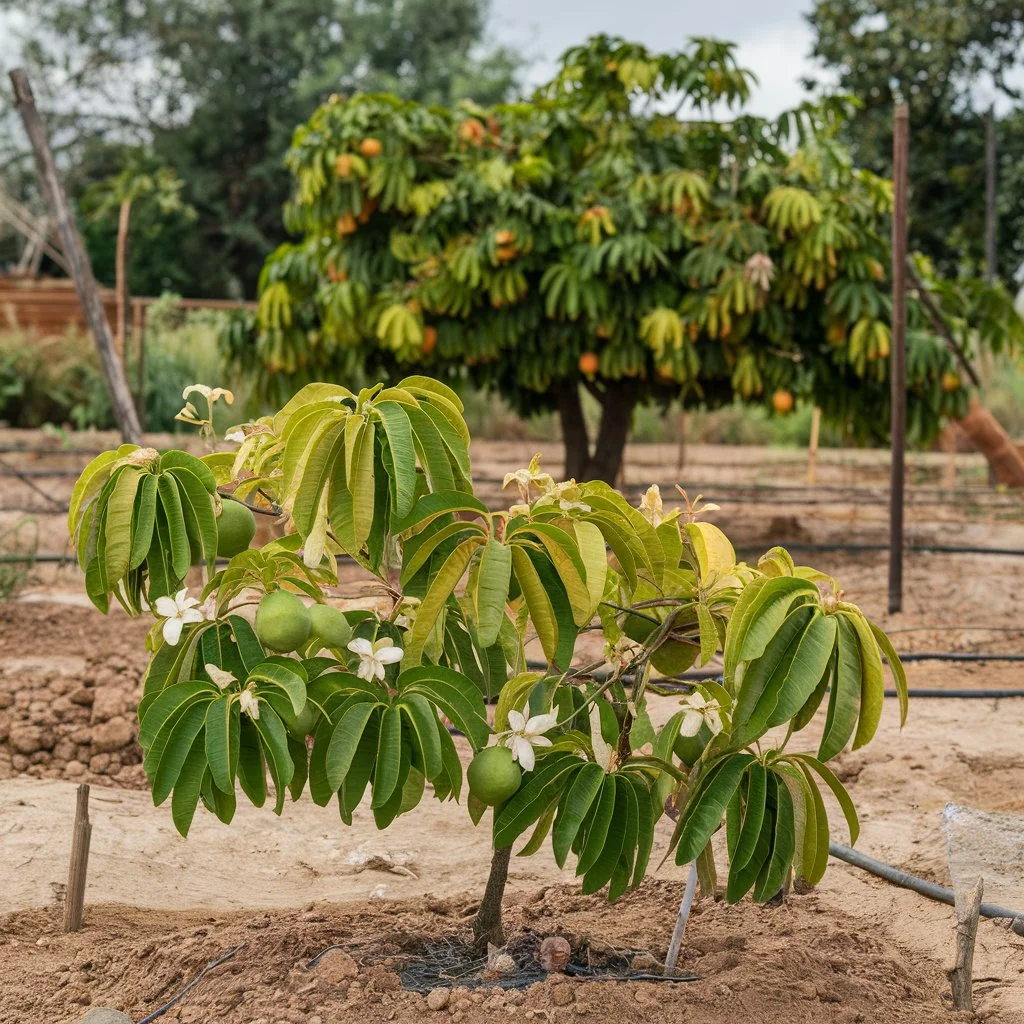Imagine biting into a tomato so juicy, sweet, and tangy that it tastes like summer sunshine wrapped in a delicate skin. That, my friend, is the magic of a vine-ripened tomato. But is it really that much better than its store-bought, mass-ripened cousins? Is the extra effort—or extra cost—worth it?
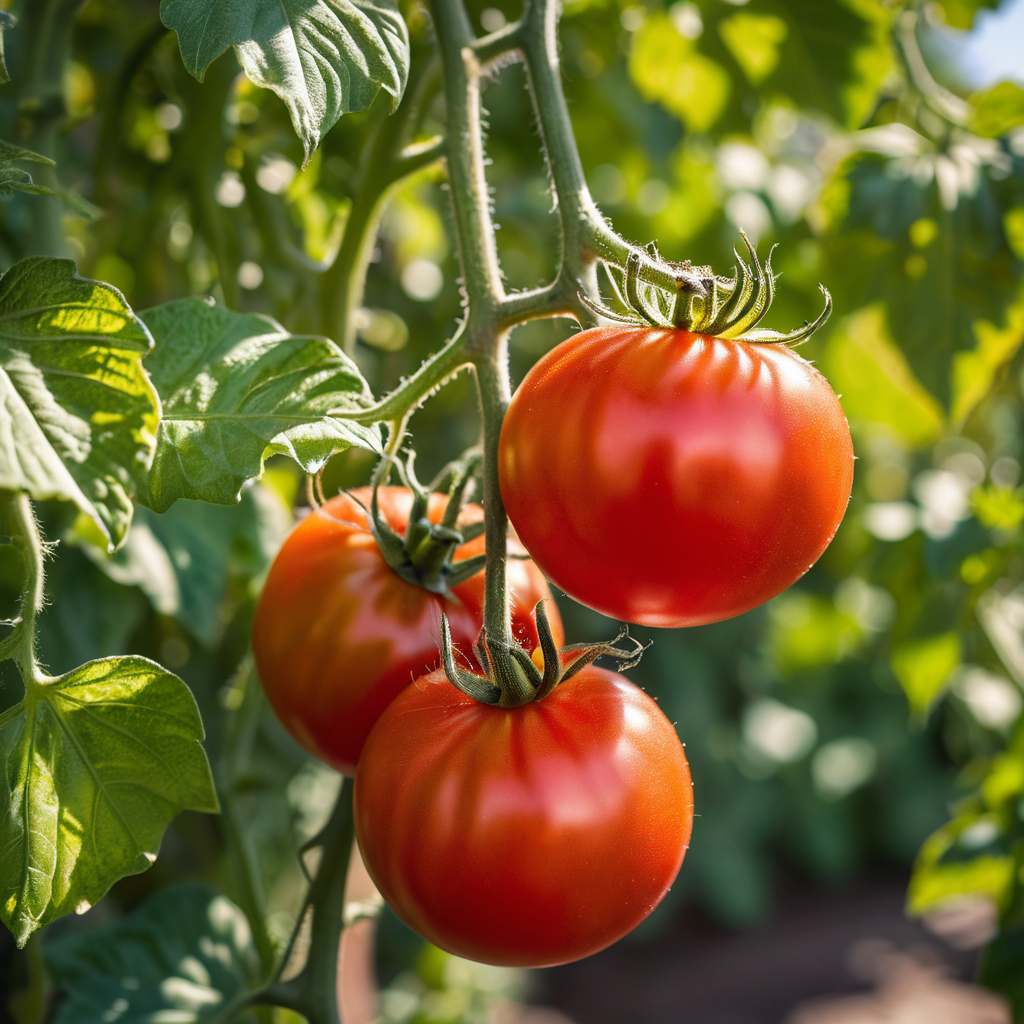
Get ready to dig into the science, secrets, and age-old debates about tomato ripening. We’ll uncover what makes these ruby-red gems so irresistible and share tips for getting that vine-ripened goodness, whether you’re plucking them fresh from your garden or coaxing store-bought tomatoes to perfection at home. By the end of this, you’ll know exactly why tomato lovers swear by the vine—and whether it’s all just a juicy myth. Let’s get to the root of it!
Vine-ripened tomatoes are special because they are allowed to fully mature on the plant, which maximizes their natural sweetness, rich flavor, and vibrant aroma. Unlike artificially ripened tomatoes, they develop their sugars, acids, and nutrients in perfect balance. This results in a juicier, tastier tomato that feels fresher and more authentic.
The Science of Tomato Ripening
Tomatoes might seem like a simple fruit, but their transformation from green, firm spheres to juicy, flavorful stars of the dinner table is anything but basic. It’s a carefully orchestrated biological process—one that balances color, taste, texture, and aroma to create the perfect bite. Understanding the science of tomato ripening not only explains why vine-ripened tomatoes are so cherished but also reveals why not all tomatoes are created equal.
- Color Chemistry: The Art of Ripening
Ripening is nature’s way of turning a tomato into a feast for the eyes and palate. As the process begins, chlorophyll—the green pigment responsible for a tomato’s early hue—starts to degrade. This makes room for the production of lycopene and beta-carotene, vibrant pigments that bring out the rich reds and warm oranges we associate with ripened fruit.
But these pigments aren’t just for looks; they’re powerful antioxidants, known to support heart health and reduce inflammation. A naturally ripened tomato isn’t just tastier—it’s healthier too, providing more of these beneficial compounds than its artificially ripened counterparts.
- Sweetness Meets Tang: The Flavor Equation
A ripe tomato isn’t just sweeter than an unripe one—it’s also more complex. During ripening, natural sugars develop, balancing perfectly with an increase in acidity. This sweet-tart combination is what makes tomatoes so versatile, equally at home in a fresh Caprese salad or a simmering pasta sauce.
Vine-ripened tomatoes, in particular, benefit from staying on the plant longer, drawing on its nutrients and sunlight to reach peak flavor. By contrast, tomatoes picked early and ripened artificially often lack this depth, tasting flat or bland.
- Texture: From Tough to Tender
The ripening process is also a textural transformation. In their early stages, tomatoes are firm and unyielding, thanks to high levels of pectin, a structural carbohydrate. As they ripen, enzymes break down this pectin, softening the fruit and giving it that desirable juicy, melt-in-your-mouth quality.
This is why vine-ripened tomatoes feel so luxurious—they’ve had time to soften naturally, creating the perfect texture for slicing, dicing, or just enjoying fresh with a sprinkle of salt.
- Aroma: The Scent of Ripeness
The moment you smell a truly ripe tomato, you know it’s something special. That intoxicating aroma is no accident; it’s the result of volatile organic compounds that are released as the fruit ripens. These compounds contribute to the tomato’s signature scent, a tantalizing blend of earthy, sweet, and tangy notes that no artificially ripened tomato can replicate.
Have you ever noticed that supermarket tomatoes often smell… like nothing? That’s because they’re typically picked green, before these aromatic compounds have had a chance to develop fully. It’s yet another reason vine-ripened tomatoes feel so much more alive.
- The Role of Ethylene Gas: Nature’s Ripening Switch
At the heart of tomato ripening is ethylene, a natural plant hormone that acts as a ripening trigger. Once a tomato reaches a certain maturity, it starts producing ethylene, which signals the fruit to soften, change color, and develop flavor.
In commercial settings, ethylene is often used artificially to ripen tomatoes picked while still green. While this process changes the tomato’s color, it often fails to replicate the full flavor and aroma that come from ripening on the vine. Essentially, these tomatoes may look ripe, but their taste and texture tell a different story.
The Science of Perfection
When a tomato ripens naturally on the vine, it’s like a work of art coming together in perfect harmony. The pigments, sugars, enzymes, and aromas all combine to create something far greater than the sum of its parts.
So, the next time you savor a vine-ripened tomato, you’ll know why it tastes so extraordinary. It’s not just a fruit—it’s a masterpiece of science and nature working together.
The Pros and Cons of Letting Tomatoes Ripen on the Vine
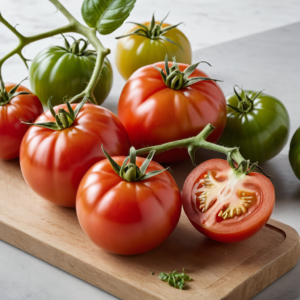
Letting tomatoes ripen on the vine might sound like the ultimate no-brainer for flavor lovers—after all, isn’t nature the best chef? But while the vine-to-table approach has its perks, it’s not without a few challenges. Let’s dive into the juicy details to see if vine-ripened tomatoes are the real MVP or just a high-maintenance diva.
The Pros: Why Vine-Ripening Is Worth the Hype
- Flavor Explosion:
Tomatoes that ripen on the vine are like VIPs at the flavor party. They get the full benefit of the plant’s nutrients and sunlight, which means their sugars and acids have more time to develop. The result? A tomato so rich, sweet, and tangy, it might make you weep. - Perfect Texture:
Vine-ripened tomatoes have a naturally balanced texture—juicy but not mushy, tender yet still firm enough to slice beautifully. They feel and taste exactly how tomatoes are meant to be. - Unbeatable Aroma:
That garden-fresh, earthy tomato scent? It’s at its peak when the fruit ripens on the vine. Artificially ripened tomatoes just can’t compete in the aroma department. - Nutritional Powerhouse:
Staying on the vine longer allows tomatoes to pack in more lycopene, beta-carotene, and other antioxidants. So, not only do they taste better, but they’re better for you, too.
The Cons: When Vine-Ripening Gets Tricky
- Timing Is Everything:
Tomatoes ripened on the vine don’t have an indefinite window of perfection. Wait too long, and you’ll end up with an overripe mess. For gardeners, this means daily tomato checks to catch them at their peak. - Vulnerable to the Elements:
Letting fruit linger on the vine can invite trouble. Pests, birds, and even a sudden rainstorm can ruin your perfectly ripened treasure before you’ve had the chance to pick it. - Less Control:
If you’re growing tomatoes at home, vine-ripening ties you to the whims of your garden. Want to take a weekend off? Too bad—those tomatoes won’t wait for you. - Shorter Shelf Life:
Vine-ripened tomatoes are already at their peak when picked, so they don’t last as long as their artificially ripened cousins. You’ll need to use or eat them quickly—though, let’s be honest, that’s not usually a problem.
The Verdict
Vine-ripened tomatoes are the gold standard for taste and quality, but they come with a bit of extra effort. If you’re willing to brave the risks of weather, pests, and the ticking clock of ripeness, the reward is a tomato so good it’ll ruin you for store-bought forever. For those who prioritize flavor above all else, letting tomatoes ripen on the vine is worth every moment of care and attention. However, if convenience is king, there’s no shame in picking them early and letting science do its thing indoors. It’s all about finding what works for you—and your tomatoes.
How to Ripen Tomatoes Off the Vine Effectively
Sometimes, despite your best gardening efforts, picking tomatoes before they’re fully ripe is unavoidable. Maybe a sudden frost is on the way, or those pesky critters keep stealing your fruit. Luckily, you can still enjoy that vine-ripened taste—even when tomatoes aren’t ripened on the vine. Here’s how to coax your tomatoes into peak ripeness off the plant, step by step.
1. Pick at the Right Stage
To get the best results, pick your tomatoes when they’re at the breaker stage—when the fruit has just begun to change color from green to pale pink or yellow. At this point, the tomato has already started producing ethylene, the natural ripening hormone, and will continue the process off the vine. Avoid picking completely green tomatoes unless absolutely necessary, as they may not ripen properly.
2. Create the Perfect Ripening Environment
Off-the-vine tomatoes need the right conditions to mimic the natural ripening process. Follow these tips:
- Temperature: Keep your tomatoes at room temperature, ideally between 65°F and 75°F. Too cold (like in the fridge), and the ripening process will slow or even stop. Too hot, and the texture may suffer.
- Light: Contrary to popular belief, tomatoes don’t need sunlight to ripen. In fact, direct sunlight can cause uneven ripening or sunscald. A dark or shaded spot works just fine.
- Ethylene Boosters: Place your tomatoes in a paper bag with an ethylene-producing fruit, such as a banana or apple. The concentrated ethylene gas will speed up the ripening process, giving you that delicious vine-ripened flavor faster.
3. Monitor for Progress
Check your tomatoes daily for color changes, aroma, and softness. Gently press the fruit—ripe tomatoes will yield slightly under pressure but won’t feel mushy. Remove any fully ripened tomatoes immediately to prevent overripening or rot.
4. Prevent Rot and Damage
Keep tomatoes in a single layer to avoid bruising, and ensure air circulation to reduce the risk of mold. If you’re ripening a large batch, consider placing them on a clean kitchen towel or in a cardboard tray.
5. Use Green Tomatoes Wisely
If some tomatoes refuse to ripen, don’t despair! Green tomatoes can still be delicious in recipes like fried green tomatoes, chutneys, or pickles. However, with the right care and attention, most off-the-vine tomatoes can still achieve that signature vine-ripened taste.
Why It Works
Ripening off the vine relies on the same process that happens naturally on the plant, with ethylene leading the charge. While the flavor might not match tomatoes ripened fully in the garden, the results are often close enough to satisfy any craving for fresh, juicy, vine-ripened tomatoes.
Final Tip
In the world of gardening, perfection isn’t always possible. But with these techniques, you can make the most of your harvest and enjoy flavorful, ripe tomatoes—even when nature throws you a curveball.
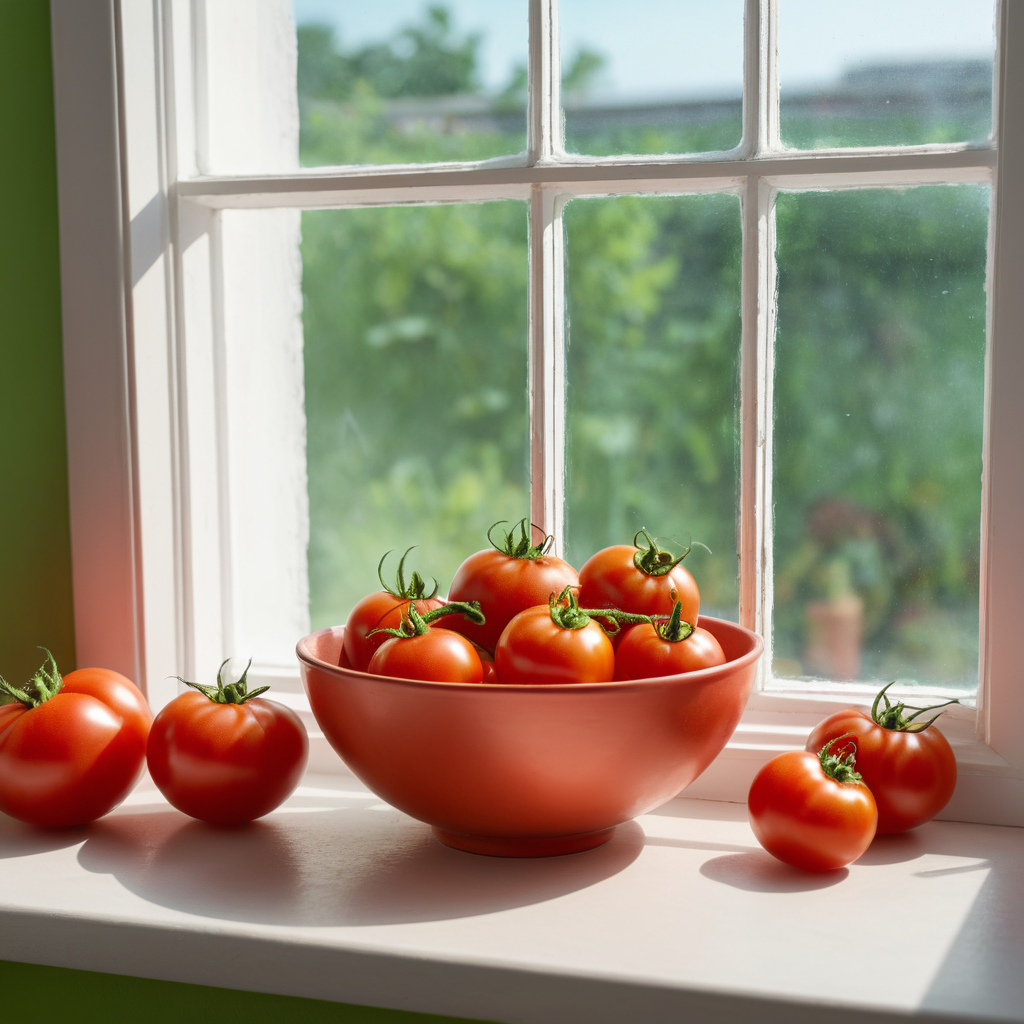
Are Vine-Ripened Tomatoes Really Worth It?
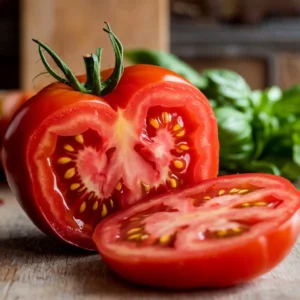 The hype around vine-ripened tomatoes is real, but are they truly worth the extra effort, cost, and care? Whether you’re a home gardener, a tomato connoisseur, or just someone who loves a good BLT, understanding the value of vine ripened tomatoes can help you decide if they deserve their glowing reputation. Let’s break it down.
The hype around vine-ripened tomatoes is real, but are they truly worth the extra effort, cost, and care? Whether you’re a home gardener, a tomato connoisseur, or just someone who loves a good BLT, understanding the value of vine ripened tomatoes can help you decide if they deserve their glowing reputation. Let’s break it down.
The Case for Vine-Ripened Tomatoes
- Flavor Like No Other
Tomatoes that ripen naturally on the vine soak up every bit of sunlight and nutrients the plant can offer. This extra time results in a balanced mix of sweetness, tang, and depth that’s hard to beat. If you’ve ever tasted a tomato fresh from the garden, you know there’s no comparison. - Aroma That Steals the Show
The rich, earthy scent of a vine-ripened tomato is a sensory experience on its own. Thanks to the production of volatile compounds during ripening, these tomatoes deliver that iconic “garden-fresh” smell that’s impossible to replicate with artificially ripened fruit. - Nutritional Perks
Vine-ripened tomatoes don’t just taste better—they’re often more nutritious. With higher levels of antioxidants like lycopene and beta-carotene, they bring both flavor and health benefits to the table.
The Counterpoint: Convenience vs. Quality
- Short Shelf Life
Once a vine-ripened tomato is picked, it’s already at its peak. This means you’ll need to eat it quickly or risk wasting it. In contrast, tomatoes picked green and ripened off the vine last longer but lack the full flavor profile. - Cost and Availability
Fresh vine-ripened tomatoes, especially from local sources or farmers’ markets, often come with a premium price tag. For those on a budget, the cost might outweigh the benefits—though many would argue the taste is worth every penny. - Gardening Challenges
For home gardeners, waiting for tomatoes to fully ripen on the vine can be risky. Pests, weather conditions, and the race against overripening can make it feel like a high-stakes game. Picking tomatoes at the breaker stage and ripening them indoors can be a safer alternative.
What About Off-the-Vine Tomatoes?
Tomatoes ripened off the vine can still deliver great results, especially if picked at the right stage and ripened properly with the help of ethylene. While they might not match the complexity of a true vine-ripened tomato, they can come remarkably close when handled with care.
The Verdict: Are Vine-Ripened Tomatoes Worth It?
For those who prioritize flavor, texture, and authenticity, vine ripened tomatoes are absolutely worth it. They capture the essence of summer and elevate any dish they touch. However, if convenience, cost, or timing is a concern, off-the-vine tomatoes can be a suitable compromise—especially with proper ripening techniques.
Ultimately, the choice comes down to what matters most to you. If your heart (and taste buds) crave that garden-fresh perfection, vine-ripened tomatoes are a must. For everyone else, a little ripening magic at home can still bring you close to that same sweet, juicy goodness.
Tips for Growing and Storing the Best-Tasting Tomatoes
If you’ve ever dreamed of plucking a vine-ripened tomato straight from your garden and biting into its sweet, juicy goodness, you’re not alone. But to get that perfect tomato, you need the right approach to both growing and storing. Whether you’re a seasoned gardener or a beginner, these tips will help you grow and store vine-ripened tomatoes that are bursting with flavor.
1. Choose the Right Tomato Varieties
Not all tomatoes are created equal, especially when it comes to flavor. For the juiciest, most flavorful tomatoes, choose varieties known for their taste. Some favorites include:
- Beefsteak – Known for its large size and sweet, tangy flavor.
- Cherokee Purple – A rich, earthy heirloom variety with complex flavor.
- Brandywine – A classic heirloom with a perfect balance of sweetness and acidity.
Look for varieties that are well-suited for your growing zone to ensure the best chance of success.
2. Give Them Plenty of Sunlight
Tomatoes are sun lovers! To get vine-ripened tomatoes with maximum flavor, plant them in a spot that gets at least 6 to 8 hours of direct sunlight each day. The more sunlight they receive, the more energy the plant can produce to create those delicious, sugar-packed fruits.
3. Well-Drained Soil Is Key
Tomatoes thrive in well-drained soil with a slightly acidic pH of 6.0 to 6.8. Good drainage is essential to prevent waterlogging, which can lead to root rot or poor fruit development. Consider adding compost or organic matter to improve soil structure and nutrients, giving your tomatoes the best possible growing conditions.
4. Support and Prune Your Plants
Tomatoes need structure to grow tall and strong. Use stakes, cages, or trellises to keep plants upright and prevent fruit from touching the ground, where it’s more likely to rot. Pruning also helps by removing excess growth, allowing the plant to focus its energy on producing bigger, tastier tomatoes. Be sure to remove suckers (the small shoots growing between the main stem and branches) to encourage healthier growth.
5. Be Mindful of Watering
Consistent watering is crucial for vine-ripened tomatoes, but avoid overwatering, which can lead to cracked fruits and diluted flavors. Water deeply and regularly, but allow the top inch or so of soil to dry out between watering sessions. Mulching around the base of the plant helps retain moisture and keeps weeds at bay.
6. Harvesting at the Right Time
For the best-tasting tomatoes, harvest them when they’re fully ripe on the vine. A vine-ripened tomato will have rich, deep color and will yield slightly to gentle pressure. If you’re trying to beat a potential frost or want to pick a tomato before it overripens, harvest it when it’s at the breaker stage—just beginning to turn color—and let it ripen indoors.
7. Storing Your Vine-Ripened Tomatoes
Once you’ve grown the perfect tomato, you want to make sure it stays in peak condition. Here’s how to store it properly:
- Room Temperature is Best: Store ripe tomatoes at room temperature, away from direct sunlight. The refrigerator can dull their flavor and change their texture, so only refrigerate if you must extend their shelf life.
- Don’t Overcrowd: Keep your tomatoes in a single layer to avoid bruising. If you have a lot to store, consider using a flat box or tray where they can breathe.
- Use Ethylene Wisely: Tomatoes naturally produce ethylene, which helps them ripen. If you need to speed up the ripening of tomatoes that are picked early, place them in a paper bag with an apple or banana to concentrate the gas and speed up the process.
8. Preserving Vine-Ripened Tomatoes
If you have an abundant harvest, consider preserving some of your vine-ripened tomatoes for later use. Canning, freezing, or drying tomatoes will allow you to enjoy that summer-fresh flavor throughout the year. When canning, be sure to follow proper safety guidelines to avoid spoilage.
Final Thoughts
Growing vine-ripened tomatoes is a rewarding endeavor that requires patience, care, and attention to detail. From choosing the right varieties to ensuring they ripen perfectly on the vine, the effort you put in will pay off in the form of the sweetest, most flavorful tomatoes you’ve ever tasted. And when it’s time to store them, treating them with care will ensure that every bite continues to transport you back to the garden. Happy gardening—and happy eating!
FAQ
- How does vine ripening work?
Vine ripened tomatoes naturally develop their full flavor and nutritional value while still attached to the plant. The process involves the production of ethylene, a natural gas that triggers the ripening process, allowing the tomato to absorb nutrients and sugars over time. This ensures that vine ripened tomatoes reach their peak in flavor and texture before being harvested, making them superior to off-the-vine options. - What does it mean for tomatoes to ripen off the vine?
When tomatoes are picked before they are fully ripe, they can ripen off the vine using ethylene, which is naturally produced by the fruit. However, this method doesn’t allow tomatoes to develop the same level of sweetness and complexity that vine ripened tomatoes achieve. While ripening off the vine is common in gardening and commercial production, the flavor often falls short compared to tomatoes that ripen fully on the plant. - Are tomatoes ripened on the vine healthier?
Vine ripened tomatoes are healthier because they ripen naturally, allowing them to absorb more nutrients, such as antioxidants like lycopene. These tomatoes benefit from the full exposure to sunlight and ethylene production, resulting in higher levels of vitamins and a richer nutritional profile. This natural process makes vine ripened tomatoes a better option compared to those ripened artificially or off the vine. - Do vine-ripened tomatoes taste sweeter?
Yes, vine ripened tomatoes are generally sweeter than those ripened off the vine. As the tomatoes ripen on the plant, they accumulate sugars and other flavor compounds, leading to a balanced and sweeter taste. This natural ripening process, aided by ethylene, is key to the rich flavor that makes vine ripened tomatoes so sought after. - What is the flavor profile of a vine-ripened tomato?
The flavor of vine ripened tomatoes is a combination of sweetness, acidity, and earthy undertones. The longer the tomato stays on the vine, the more it develops these complex flavors, resulting in a superior taste profile. Thanks to ethylene and the natural ripening process, vine ripened tomatoes offer a richer, more balanced flavor than those ripened artificially. - How does ripening differ from rotting?
Ripening is the natural process where tomatoes mature, developing their flavor and nutritional content, especially in vine ripened tomatoes. Ethylene plays a critical role in triggering this process, allowing the fruit to ripen at its optimal pace. In contrast, rotting occurs when tomatoes break down due to bacterial or fungal activity, causing them to spoil and become inedible, unlike the beneficial ripening process.
Conclusion: Flavor, Convenience, and Your Perfect Tomato
In the world of tomatoes, vine ripened tomatoes truly stand out, offering a flavor and nutritional profile that’s hard to beat. Whether you’re harvesting them straight from your garden or picking them up at the store, these tomatoes offer a sweetness and complexity that makes every bite a delight. Understanding the science of vine ripening, the benefits of ethylene, and how to grow your own in the garden can elevate your appreciation for this humble fruit. So next time you enjoy a juicy tomato, remember—vine-ripened goodness is where the flavor truly shines! Happy gardening, and may your vine ripened tomatoes always be delicious!
Check out our latest article for more insights, and follow us on Facebook for updates! and connect with us on Instagram, Pinterest, and YouTube for more inspiration!

